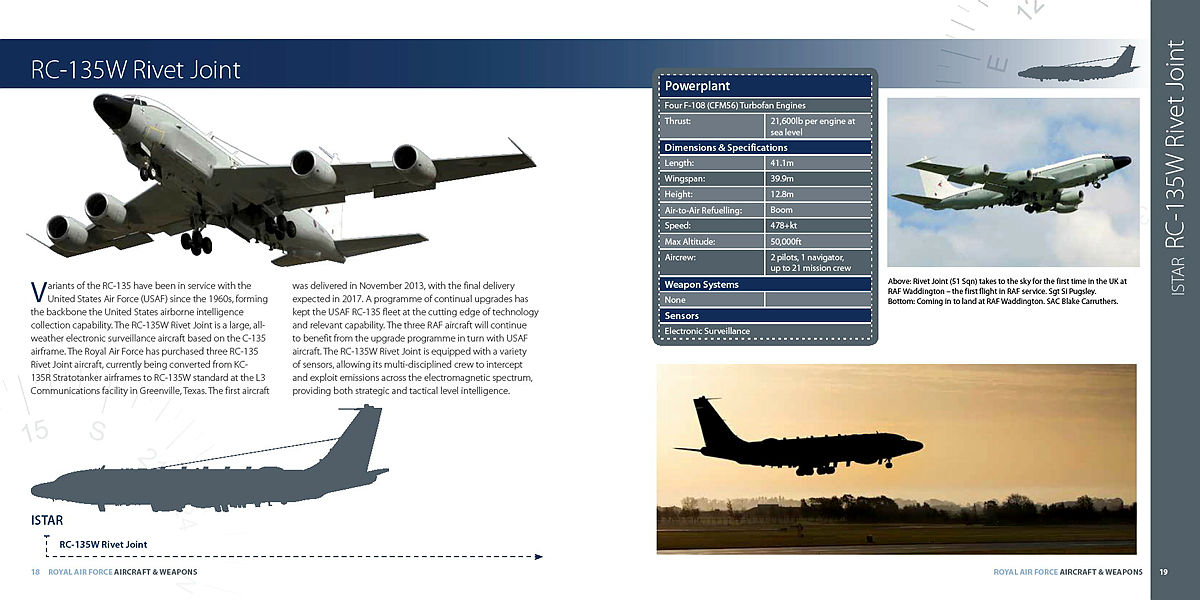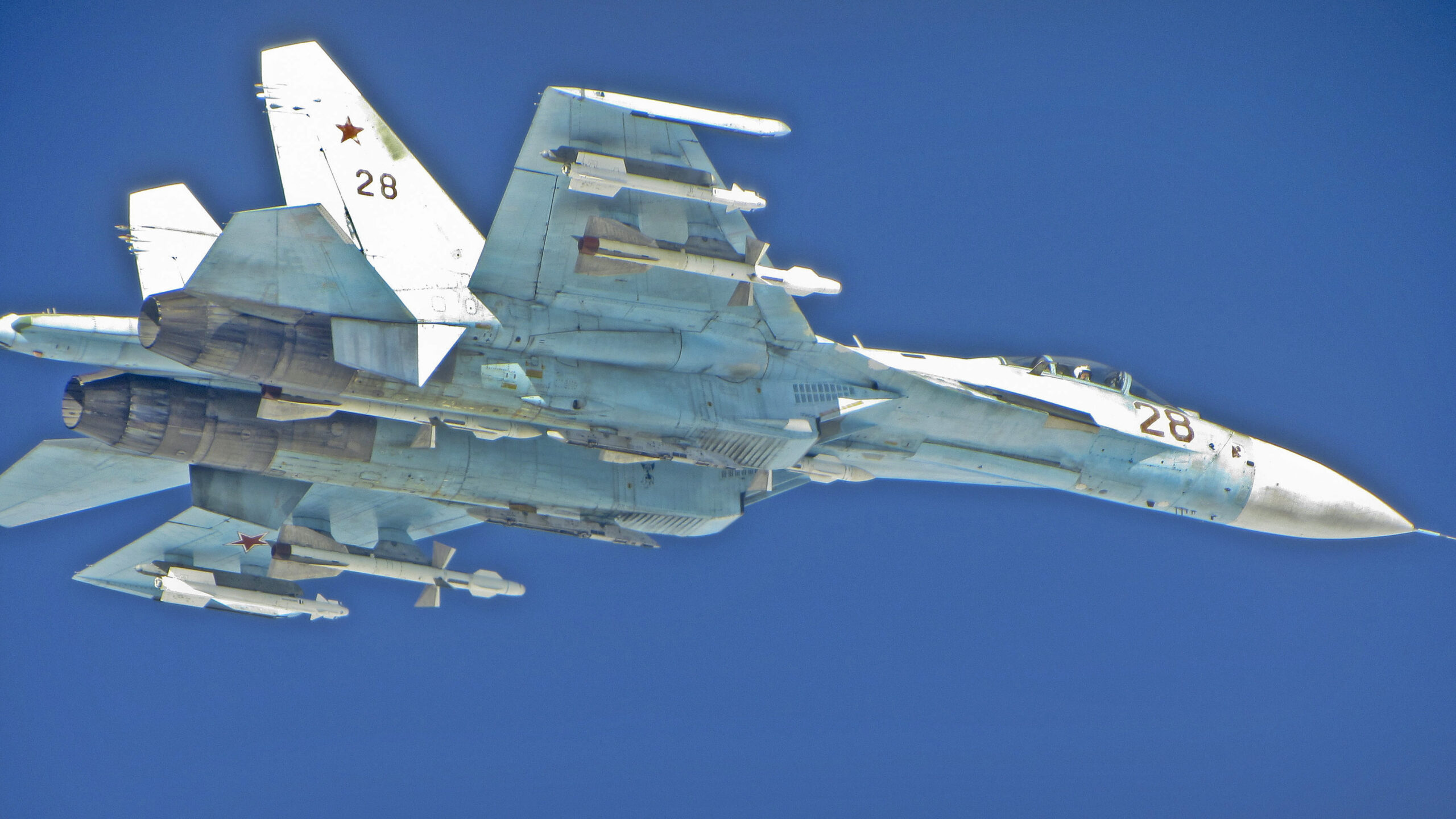A Russian Su-27 Flanker “released” a missile during an encounter with a British Royal Air Force RC-135W Rivet Joint electronic surveillance aircraft, the U.K. Ministry of Defense has revealed. The incident occurred over the Black Sea, which has seen increasing dramatically tensions between Russian forces and NATO, including previous close encounters involving British warships. However, a stray missile, whether released accidentally or otherwise, could conceivably have led to a lethal escalation. Regardless, Royal Air Force RC-135s are now escorted by Typhoon fighters while operating over the Black Sea as a result of the incident.

Speaking to fellow members of parliament in the House of Commons today, U.K. Defense Secretary Ben Wallace provided some details of the incident, which occurred in international airspace above the Black Sea on September 29. Many aspects of the incident remain unclear, however. The use of the term “released” means it’s not immediately obvious if the missile in question was fired cleanly from the rail, or if it somehow broke loose and fell away unguided and/or unpowered.
Wallace explained that, during the incident, the “unarmed RAF RC-135 Rivet Joint,” flying from its base at RAF Waddington in the United Kingdom, was “interacted with” by two Russian Su-27s, which shadowed it for a total of around 90 minutes. This is a very standard procedure for these kinds of flights in international airspace. However, one of those Russian fighters “released a missile in the vicinity of the RAF Rivet Joint beyond visual range.”
The wording of that last point is also a little curious since it’s not clear if the minister is describing the release of a beyond-visual-range missile, or whether the missile was released at beyond visual range in relation to the RC-135W, or both.

The degree to which the RC-135W and its crew were in danger is also not immediately clear, although the U.K. defense secretary branded it a “potentially dangerous engagement.” At the same time, he appeared to make efforts to downplay its wider significance, stating that it was not considered a “deliberate escalation.”
As we have discussed in the past, the Rivet Joint, also flown by the U.S. Air Force, is an extremely powerful electronic and signals intelligence-gathering platform. They are equipped to hoover up information about the type and location of various signal emitters, such as radars, to help in the construction of an electronic order of battle detailing the air defense, command and control, and other capabilities of an adversary or potential adversary. They also work to intercept communications. As such, they play a vital role in monitoring Russian activities in the Black Sea, occupied Crimea, and the wider region.
No details of the type of missile were given. Provided the Russian aircraft was indeed a Su-27 (as opposed to a more modern Flanker variant), then its missiles would almost certainly only consist of older types of air-to-air weapons, chiefly the medium/extended-range R-27 (AA-10 Alamo) family with semi-active radar or infrared guidance, and the short-range R-73 (AA-11 Archer) that uses an infrared seeker.

Again, however, we don’t know if the missile in question actually engaged its motor, although it’s almost certain to have carried a live motor and warhead. If that did happen, then either of those types of weapons could potentially knock a lumbering RC-135W out of the sky, even if launched unintentionally.
That last line of argument is the defense that Russia has provided to the United Kingdom to explain its actions.
According to Wallace, Russia blamed the missile launch on a “technical malfunction.” While not unheard of, previous incidents of accidental missile launches have tended to be the result of pilot error, rather than a technical problem.
The British defense secretary said: “Our analysis would concur it was a malfunction.”
At this stage, we also don’t know how the crew of the RC-135W was alerted to the missile release — or even if they were aware of it at the time.
Regardless, the RC-135W completed its sortie and returned safely to its base. According to data available from Flightradar24, the Rivet Joint in question was serial ZZ664 and the total sortie duration was 10 hours 30 minutes.
“I have communicated my concerns directly to my Russian counterpart, Defense Minister [Sergei] Shoigu, and the chief of defense staff in Moscow,” Wallace said.
He added: “In my letter, I made clear the aircraft was unarmed, in international airspace, and following a pre-notified flight path. I felt it was prudent to suspend these patrols until a response was received by the Russian state.”
“The reply by the Russian Minister of Defense on October 10 stated they have conducted an investigation into the circumstances of the incident and stated it was a technical malfunction of the Su-27 fighter. They also acknowledge that the incident took place in international airspace.”
After a U.K. Ministry of Defense report into the incident, it was decided that routine patrols by RC-135Ws could resume, although now with fighter escort provided by Typhoon jets. The presence of these fighters alongside the Rivet Joint is something that began to be noticed on flight-tracking websites in the last few days.
Wallace also confirmed that information about the incident was shared with the United Kingdom’s allies, although it’s unclear what kind of measures, if any, they have taken.
“We welcome Russia’s acknowledgment this was in international airspace, and the U.K. has conducted regular sorties with the RAF Rivet Joint in international airspace over the Black Sea since 2019 and we will continue to do so,” Wallace added.
The U.K. defense secretary also issued a word of caution as regards Russian military activity, noting that the country’s armed forces are “not beyond” deciding “the rules don’t apply to them.”
Regardless of the fact that both Moscow and Russia appear to agree (at least in public) that the missile release was accidental, Su-27s have something of a track record for brazen and sometimes dangerous intercepts over the Black Sea, in particular.
Back in 2020, Su-27s executed a maneuver sometimes referred to as ‘thumping’ or a ‘headbutt’ in close proximity to a U.S. Air Force B-52H, again in international airspace. One video clip of the incident shows a Flanker performing a similar maneuver, directly in front of the nose of the B-52 at incredibly close range. Needless to say, the Pentagon took a very dim view of the Russians’ behavior.

More recently, the United Kingdom has had run-ins with the Russian military in the Black Sea, too. In June last year, the U.K. Ministry of Defense flatly denied Russia’s claims that its military and internal security forces had taken aggressive action against a U.K. Royal Navy Type 45 destroyer, HMS Defender, sailing in these waters.
Initial reports citing the Russian Ministry of Defense had said a Russian Border Guard vessel and a Su-24 Fencer combat jet both fired warning shots at the British warship, with the latter purportedly dropping four high-explosive bombs across the British warship’s path. Footage later released showed the Russian vessel opening fire, but with Defender at a considerable distance from it at the time.

Tensions were already high in the region in the wake of the Russian annexation of the Crimean peninsula from Ukraine in 2014. The United Kingdom, among many other members of the intentional community, does not recognize Russia’s authority over Crimea. Since the Kremlin’s full-scale invasion of Ukraine in February, the strategic importance of Crimea has only increased. Indeed, the Su-27s involved in the incident with the Rivet Joint were very likely operating from Crimea, where airbases include Saki, which was rocked by explosions in August that left at least 10 Russian Navy aircraft damaged or destroyed.
Overall, the latest incident is a dramatic reminder of the fact that the potential for escalation between Russia’s forces and those of NATO and its allies is notably high and is only likely to remain so as long as the war in Ukraine rages. A malfunction, as this missile incident purportedly was, increases the already considerable chances of some kind of miscalculation or misjudgment that could have far more serious consequences.
We approached the U.K. Ministry of Defense for further details of this incident but were told that no more information would be added over and above the defense secretary’s comments, for security reasons. Nevertheless, if more details become available, we will update this story accordingly.
Contact the author: thomas@thedrive.com
